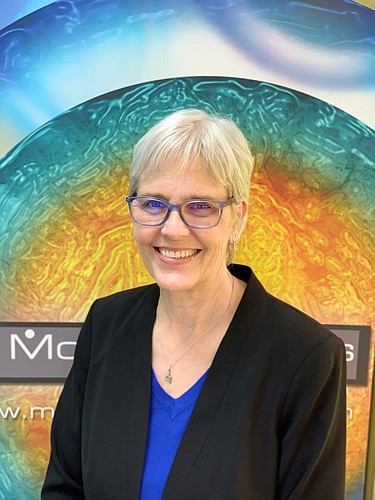- March 13, 2025
-
-
Loading

Loading

The word vaccine carries heavy weight these days, with its tantalizing possibilities to curb the destruction brought on by a certain C-word.
But at Tampa-based bioscience company Morphogenesis, the word vaccine is connected to a different kind of C-word: cancer. And the company, backed by nearly $30 million and the support of board Chairman Dr. Kiran Patel, a leading area philanthropist, is zeroing in on some major milestones in its cancer vaccination effort. The list includes a new manufacturing facility, expanded clinical trials and a potential new capital raise, with its eye on a possible public offering.
Along the way, the company’s leaders have learned valuable lessons, primarily in assessing risk vs. reward in decision-making. That’s because for a non-revenue generating company with such high stakes, chasing the wrong opportunities could be a fatal mistake. Like many in bioscience, the founders, Drs. Patricia and Michael Lawman, got into this work to help people, and of course, curb the devastating effects of cancer. But the Lawmans and their staff know the endgame is a product that works — and is sold, either through a licensing agreement or related deal.
‘My biggest worry is finding enough patients to keep going with the research. And time is money for us.’ Patricia Lawman, Morphogenesis
“The elephant in the room is the financial aspect,” says Morphogenesis Director of Regulatory Affairs Ashraf Dehlawi. “What is the best path we can go down with this product so it can be profitable in 10 years?”
Dehlawi and Patricia Lawman add that there’s a litany of factors to consider when deciding that path, including FDA requirements, availability of test subjects and tracking competitors.
One key decision was to focus on what Patricia Lawman calls a therapeutic vaccine, which employs cell and gene therapy that marks cancer tumor cells for destruction by the body’s own immune system. This is counterintuitive to traditional cancer treatment, which uses radiation and chemotherapy to kill off both the cancer cells and some good ones, too.
Morphogenesis’ pioneering work in this area is called ImmuneFx. It essentially educates a body’s immune system, through bacterial antigen on the surface of the patient’s tumor cells, to destroy those cancer cells without harming other cells and tissues. ImmuneFx is injected directly into the tumor, and, different than chemotherapy, can take several weeks to fully attack the tumor.
With that backdrop, Patricia Lawman, CEO, made the decision several years ago to work on skin cancers first. That’s partially because skin cancers, such as melanoma, have a large body of research for comparisons and partially because skin cancers are usually easier for injections. Lawman says selecting skin cancer to study first was the one of several high-pressure forks in the road the company chose. “A bad decision, a mistake, is very hard to recover from,” says Lawman, who, along wither husband, was a researcher at the Walt Disney Cancer Institute when they decided to start their own company, in 1995.
More recently, another key move — again counterintuitive to the usual way of doing business in bioscience — was a decision to manufacture ImmuneFx on its own. Most bioscience firms, particularly ones in Silicon Valley and college towns, outsource that work. But Lawman, citing the need for quality control and other compliance issues, in addition to being able to meet demand without having a middleman, says having their own facility is essential.
The Morphogenesis facility is 12,000 square feet, next to its main office and down the street from Moffitt Cancer Center, where it finds most of its human testing base. It took about a year and $2.5 million to retrofit it for the company’s needs and regulations. “There are some steep criteria,” Lawman says, “because we are injecting directly into the patient’s tumor.”
The new facility is expected to open by October, and will make ImmuneFx for clinical trials, not commercial use. While Morphogenesis, with
16 employees, looks toward the new facility, it’s also looking to raise more money. With its $30 million in total raised, including $16 million in a 2018 round backed by Patel, the company recently started working with Wells Fargo for another large capital infusion. “We need venture capital or institutional investors to position us for an IPO,” Lawman says.
To support the effort to land more investors, Lawman says the priority is to increase the amount of trials Morphogenesis does. Earlier this year it received FDA approval to add to two more types of skin cancer to its testing protocols — a major win. “We have to prove our research does what it says it will do,” she says. “That’s why the bar for us is human data.”
Getting more people for testing, particularly during the pandemic, is a core challenge for Morphogenesis. Some people have been avoiding hospitals and other means of care, due to COVID-19 anxieties, and that means it’s tougher for the company to find people. “My biggest worry is finding enough patients to keep going with the research,” Lawman says. “And time is money for us.”